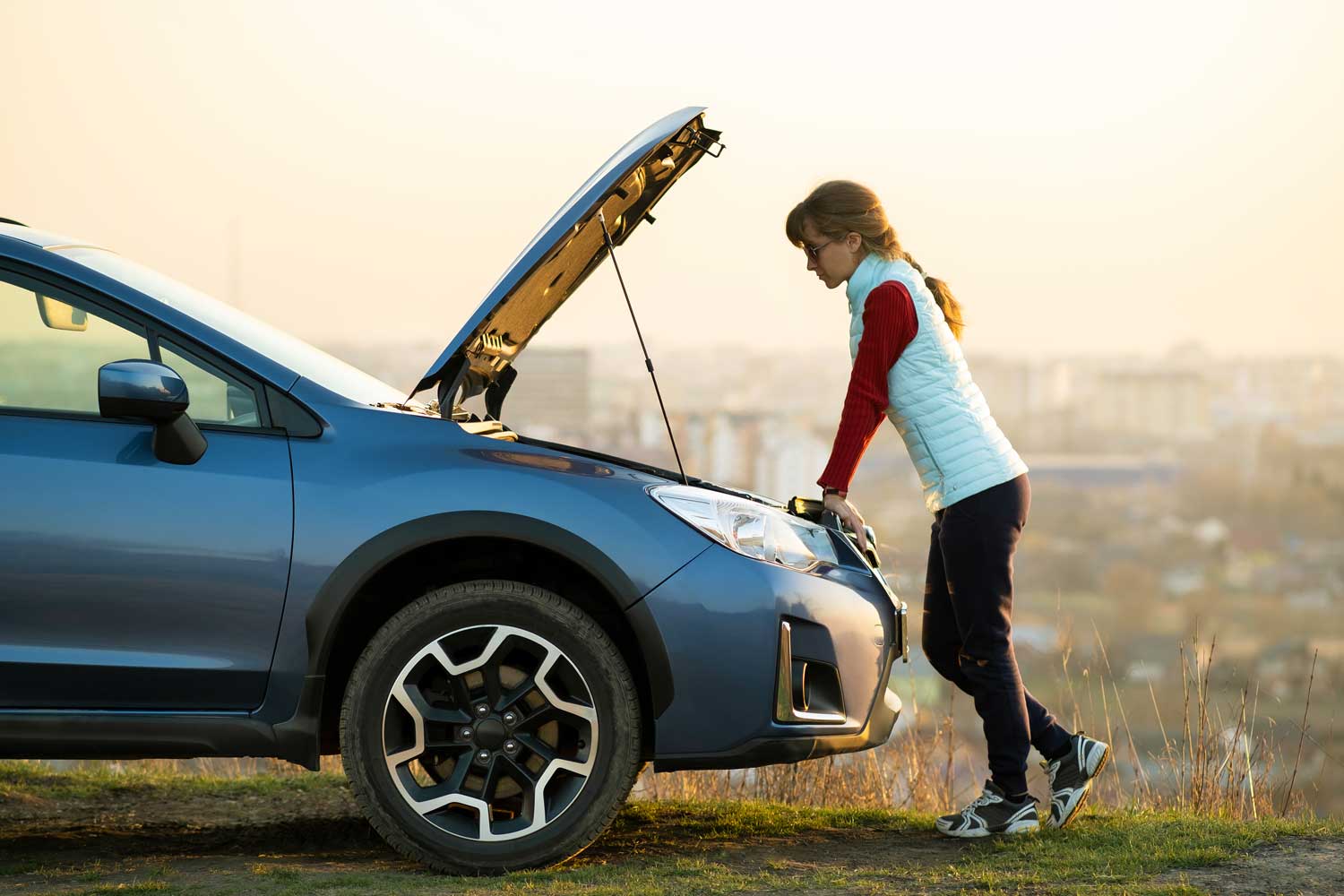What to Do When Your Car Battery is Dead
Battery run out of juice? A jump-start from another car or a jump pack can help get you rolling again.
 Shutterstock
Shutterstock
A nearly inevitable part of the motoring experience is a dead battery. Maybe the lights stayed on longer than intended and drained all the charge, and now your car won’t start. These tips may get you back on the road, but you may also need to replace your battery or check for other electrical system problems like a failing alternator.
Jump-Starting Your Car Battery
The simplest way to bring your vehicle back to life is to jump-start the battery. This involves either sharing the electrical power from another automobile through jumper cables or using a portable jump pack to help give you enough juice to start your vehicle.
The portable jump-starter solution is sometimes the easiest. Most have electrical leads you need to attach to the dead battery, which will provide enough spark to restart your car. Some, but not all, are able to supply power to completely discharged batteries. Most require some voltage to operate, even if that’s not enough to start the car.
Chargers that plug into a 12-volt outlet inside your car are simple, but they’re not a quick solution, like jump packs or jumper cables. Those types of chargers — often called cigarette lighter jump starters — function more like a trickle charger, supplying very low amperage through the light duty wires (when compared to the wires attached to your car battery) that charges the car’s battery slowly.
Alternatively, if you’re at home and you have time, a battery charger is a viable solution for addressing a dead car battery. The cheapest, and most basic, models will plug into an ordinary wall outlet and can recharge a car’s battery in a few hours. More expensive models may even have an “engine start” mode.
How to Jump-Start Your Car With Jumper Cables
To increase safety when jump-starting your car using a second car, you’ll need a set of cables and someone with a working automobile. Get that vehicle close to yours, make sure both vehicles are safely parked with their engines off, and then pop the hoods.
Take a quick look to identify the positive and negative terminals on both batteries. The safe sequence for jump-starting is to attach the red (positive) clamp to the positive post on the dead battery, and then connect the other positive lead to the donor vehicle's battery.
Connect the black (negative) lead to the working battery, and then connect the other negative lead to an unpainted metal spot like a clean bolt on your vehicle to ground it. Many newer vehicles have a dedicated ground post for this exact purpose. Make sure the cables aren’t near any belts or fans that they could get caught in before continuing.
Now, start the working vehicle and wait about a minute or two, allowing the good car’s charging system to supply power to the dead battery. Then, attempt to start your vehicle. If your vehicle nearly starts, but doesn’t quite make it, give it some more time before the next attempt.
If your car starts successfully, disconnect the black/negative leads first, then the positive connections. It’s also a good idea to let the car run for an extended period to help recharge its battery, before shutting it off. Otherwise you might have to go through the same process again.
Do not let the black and red leads touch one another.
Batteries aren’t always located under the car’s hood, but odds are you’ll find negative and positive battery terminals even if the battery itself is elsewhere. When in doubt, consult your owner’s manual.
How to Jump-Start Your Car Battery With a Jump Pack
Jump starting a car with a jump pack is much simpler than with jumper cables. Make sure your car is parked in a safe place, in park or neutral, and open the hood. Locate the car battery and the positive and negative terminals — or the respective posts if the car battery is located elsewhere — and hook up the jump pack. Turn the jump pack on, wait about a minute, then try to start your car.
When Jump-Starting Doesn’t Work … Consult an Auto Expert
If you’ve tried the jump-starting routine and are still unable to get your car to start, it might mean that your battery is completely dead. Have a mechanic, an auto shop, or an auto parts store test the battery to see if it needs to be replaced entirely. Auto batteries have a typical life of three to five years, after which they can no longer hold a charge, and yours may have reached the end of its journey.
A car battery test result will also let you know if there may be another problem. The alternator — the mechanically driven electrical generator attached to your engine — may no longer be able to generate enough power to keep your car going and your battery charged.
If you’ve also been experiencing dim headlights, slow-to-work accessories, or the smell of burnt wiring, it might be shot. A mechanic can run a quick test and see if the car battery needs replacement.
Written by humans.
Edited by humans.
 Andy Stonehouse
Andy StonehouseAndy Stonehouse literally fell into the world of auto writing while working as a ski-town journalist, and has not looked back since. A childhood spent dealing with the eccentricities of a 1976 MG Midget has made any subsequent auto experience a more safe and reliable drive. He has been blessed with nearby mountain trails and snowy roads in Colorado to do TV-adventure-styled test drives on a weekly basis.
Related articles
View more related articles